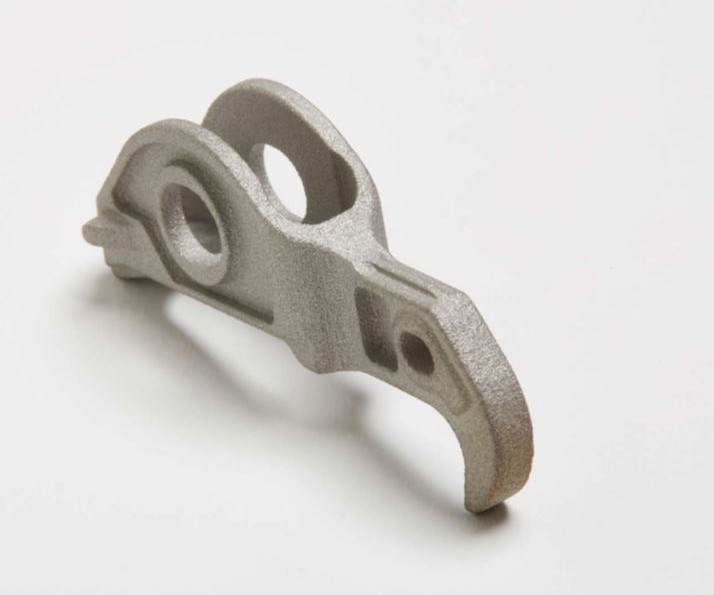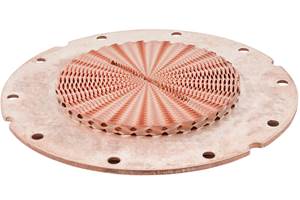From Functional Parts to Lots of Functional Parts, AM Is Advancing into Production Scale
The assumption that additive is only for low-volume manufacturing is about to give way. Read these stories of companies getting ready for additive production at larger scales.
Share
Read Next
Additive manufacturing at production scale is coming.
What scale, specifically? We will see. But the belief that AM is for production of only low-quantity runs seems as though it might be the latest assumption about additive that will need to give way. Technologies for fast and repeatable 3D printing appropriate to volume production have appeared and are now finding their places, and we cover various examples in recent posts.
Assumptions giving way have marked the story of 3D printing so far. First, there was the assumption that 3D printing is only for prototyping and can’t be trusted for functional components. The term “additive manufacturing” had yet to be coined. Then there was the assumption that additive technologies can indeed make functional tooling such as molds, but offers a poor choice for end-use parts.
Now, an assumption still current says that additive manufacturing can make end-use parts after all, but is appropriate for end-use parts only at low quantities. At anything like production scale, some conventional process has to take over. This will be the next assumption to fall. Companies we’ve met with recently already see as much.
The Technology House, for example, has tracked the entire arc of these assumptions. Founded to provide prototypes via 3D printing, the company advanced from there into manufacturing, but not additive manufacturing. It advanced into manufacturing initially by buying a machine shop. But now, with the adoption of Carbon’s CLIP technology, the company’s plans to advance the machine shop are vying with its pursuit of production AM.
By contrast, 3DEO jumped onto that arc far along the curve. This company has been focused on production from the beginning. Making production-scale parts additively proved so promising, this company believed its best way forward was to keep its special 3D printing platform in-house and provide part-making services as this platform’s sole user.

Producing a part such as this roller finger follower today would require tooling such as a mold or, if machined from solid, would require an elaborate machining cycle. 3D printing offers a simpler process.
Then there is HP. The stainless steel part above was made on HP’s new Metal Jet 3D printer, which the company debuted at the Additive Manufacturing Conference at the International Manufacturing Technology Show (IMTS). We got a preview ahead of the launch; here is our report. Additive manufacturing—and AM specifically for production—is “the biggest long-term bet HP is making,” says company 3D Printing President Stephen Nigro.
What other assumptions about additive are being harbored still? One might be that the part ought to be ready for finishing or assembly as soon as it comes out of the printer. In the case of each of the production AM technologies covered in this issue, the next stop after 3D printing is an oven or furnace for curing or sintering the part. Stephanie Hendrixson and I wrote these articles, and neither of us aimed for an “oven” theme, but that is the way the issue came together. That commonality among these stories is perhaps a meaningful clue. One of the ways to try to realize an additive process that is both productive and cost-effective is to let the forming of the part and the curing of the material occur in two separate steps within two separate stations. Not every AM process being applied to production makes this separation, but it might be that the presence of ovens and the development of oven technology will prove more and more instrumental to AM.
Noticing clues like this—that is where AM has us right now. That’s what we need to keep doing. AM is so new, and we are still so young in our understanding of it, that we don’t yet know where it will lead. And AM as a potential means of volume production is so new that that possibility is barely here. At this point, we are still prone to fail in our imagining. There is ever the danger of assuming too soon that we have AM technology all figured out, that we have seen additive settle into its role, that the bounds of its progress are in sight.
All we can do is watch, taking care to be wary of the hype, of course, but also taking care not to trust too fully in the certainty of our current assumptions.
Related Content
3D Printing with Plastic Pellets – What You Need to Know
A few 3D printers today are capable of working directly with resin pellets for feedstock. That brings extreme flexibility in material options, but also requires greater knowledge of how to best process any given resin. Here’s how FGF machine maker JuggerBot 3D addresses both the printing technology and the process know-how.
Read MoreWith Electrochemical Additive Manufacturing (ECAM), Cooling Technology Is Advancing by Degrees
San Diego-based Fabric8Labs is applying electroplating chemistries and DLP-style machines to 3D print cold plates for the semiconductor industry in pure copper. These complex geometries combined with the rise of liquid cooling systems promise significant improvements for thermal management.
Read MoreTwo 12-Laser AM Machines at Collins Aerospace: Here Is How They Are Being Used
With this additive manufacturing capacity, one room of the Collins Iowa facility performs the work previously requiring a supply chain. Production yield will nearly double, and lead times will be more than 80% shorter.
Read MoreHow Norsk Titanium Is Scaling Up AM Production — and Employment — in New York State
New opportunities for part production via the company’s forging-like additive process are coming from the aerospace industry as well as a different sector, the semiconductor industry.
Read MoreRead Next
Profilometry-Based Indentation Plastometry (PIP) as an Alternative to Standard Tensile Testing
UK-based Plastometrex offers a benchtop testing device utilizing PIP to quickly and easily analyze the yield strength, tensile strength and uniform elongation of samples and even printed parts. The solution is particularly useful for additive manufacturing.
Read MoreCrushable Lattices: The Lightweight Structures That Will Protect an Interplanetary Payload
NASA uses laser powder bed fusion plus chemical etching to create the lattice forms engineered to keep Mars rocks safe during a crash landing on Earth.
Read MoreBike Manufacturer Uses Additive Manufacturing to Create Lighter, More Complex, Customized Parts
Titanium bike frame manufacturer Hanglun Technology mixes precision casting with 3D printing to create bikes that offer increased speed and reduced turbulence during long-distance rides, offering a smoother, faster and more efficient cycling experience.
Read More




















